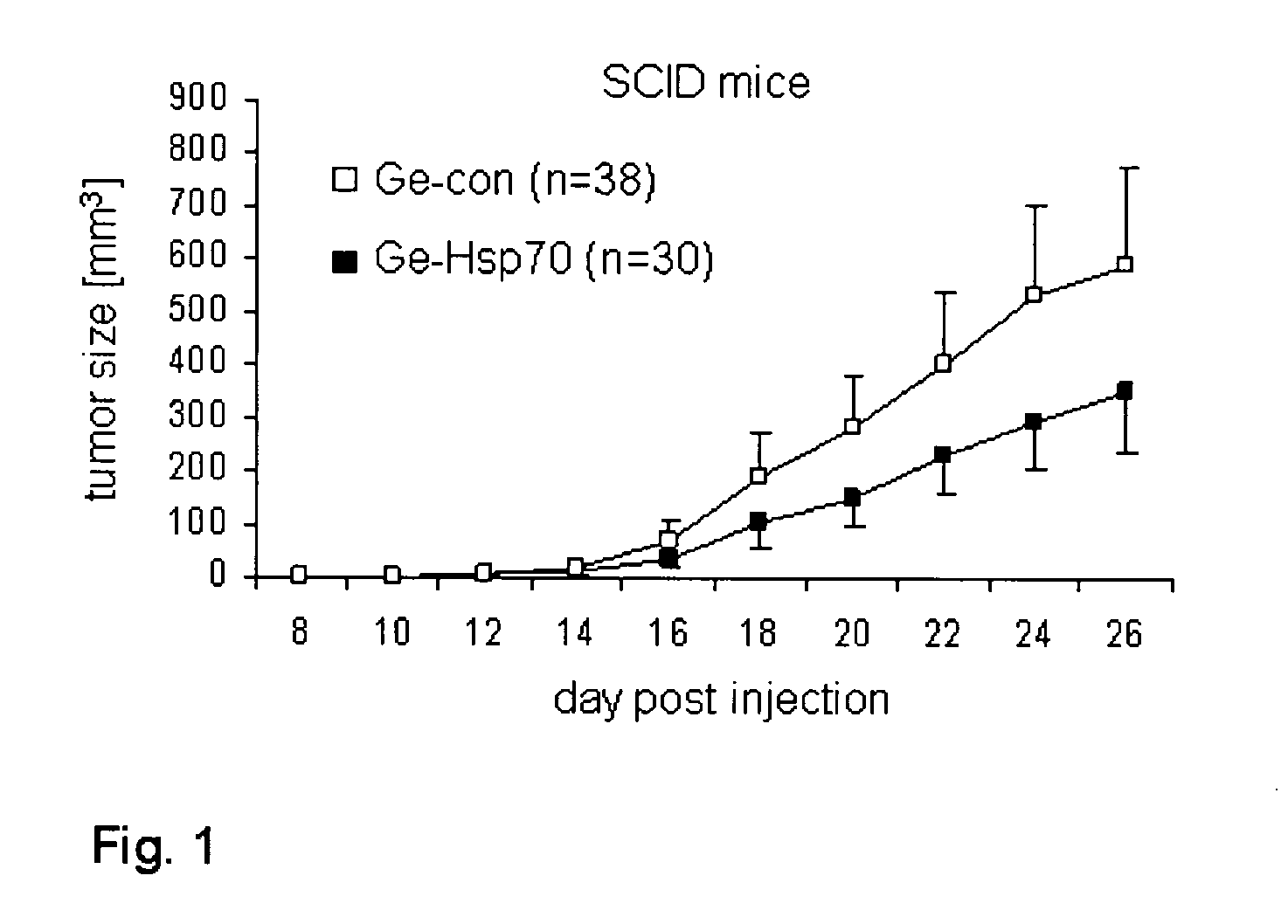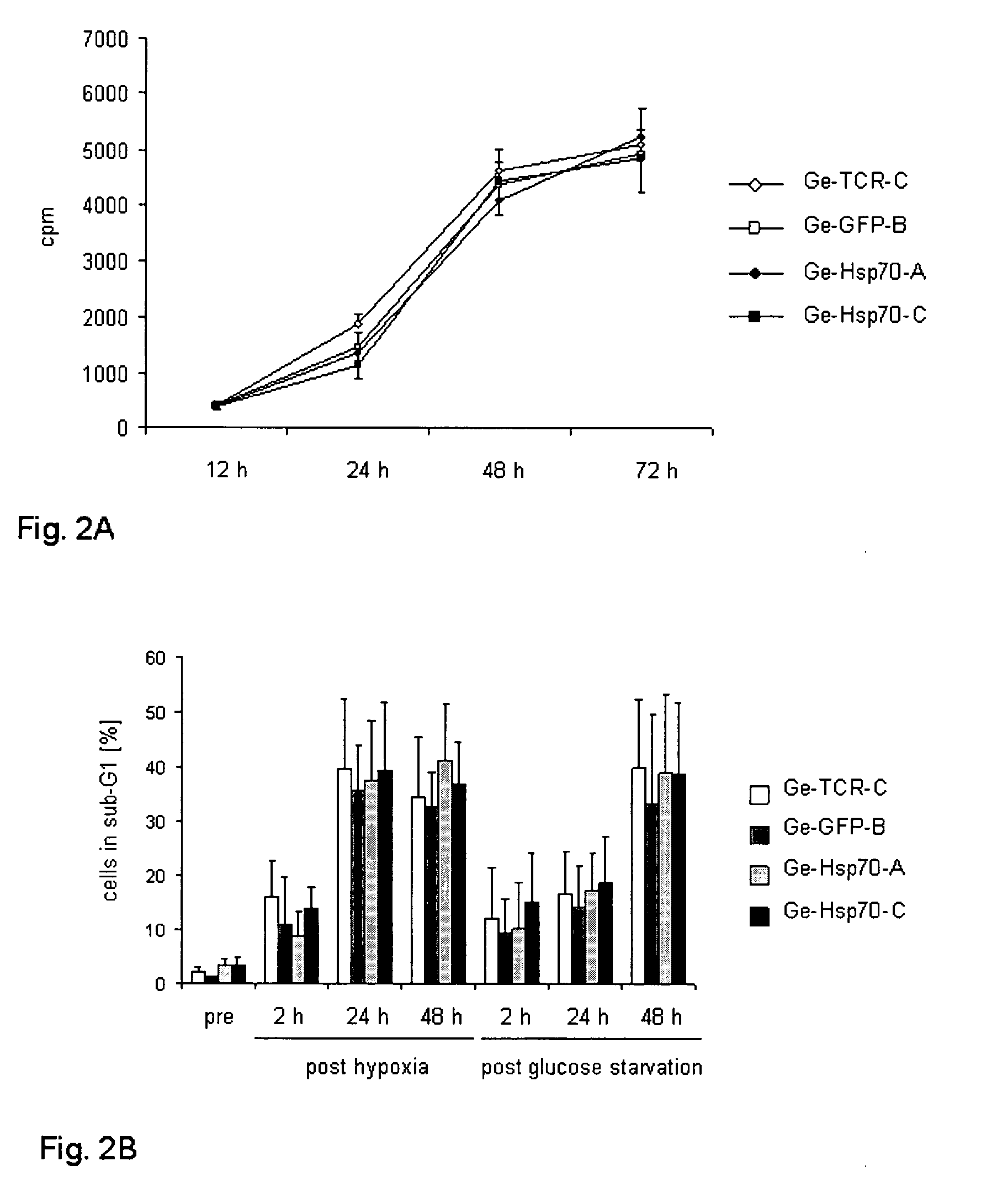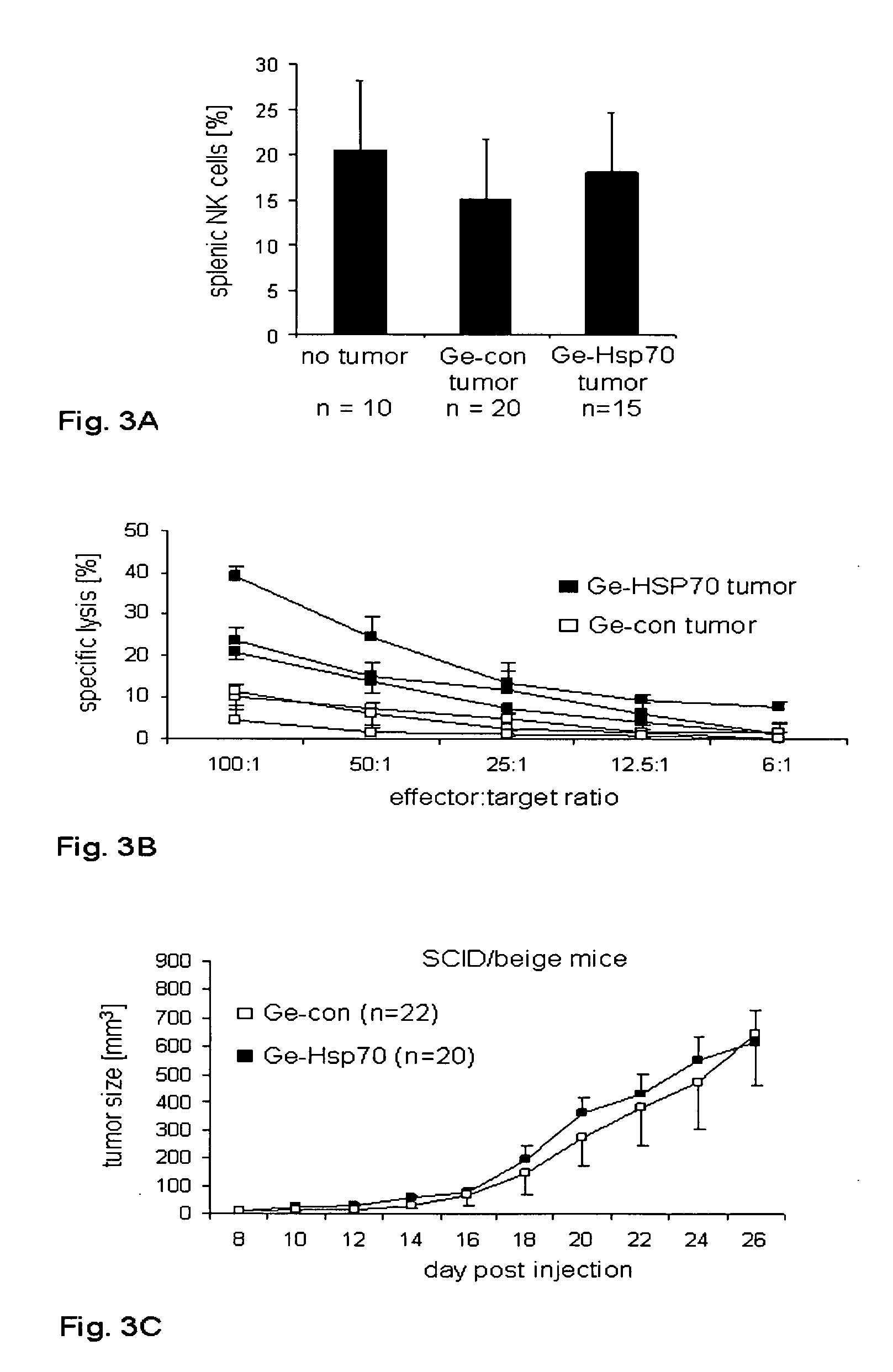Compositions and methods for immunotherapy
a technology of immunotherapy and composition, applied in the field of immunotherapy, can solve problems such as limiting the therapeutic efficiency, and achieve the effects of suppressing metastases, reducing the growth of primary tumors, and reducing the growth of hsp70 overexpressing tumors
- Summary
- Abstract
- Description
- Claims
- Application Information
AI Technical Summary
Benefits of technology
Problems solved by technology
Method used
Image
Examples
example 1
Reduced Tumor Growth of HSP70 Overexpressing Melanoma Cells
[0095]The human melanoma cell line Ge was transduced retrovirally to overexpress constitutively the normally stress-inducible MHC-linked rat Hsp70-1 (Hspa1) gene. The rat and human MHC-linked inducible HSP70 proteins are 96.3% identical and 98.4% similar, but they can be distinguished at the MRNA level by probes specific for the 3′ untranslated region. Control cell clones (Ge-con) were obtained by transduction with a rat TCRβ or GFP expression construct derived from the same vector. Both the Ge-Hsp70 and the Ge-con clones were previously described and characterized in detail by in vitro analyses (15). Ge-Hsp70 and Ge-con cells were injected subcutaneously into the flank of SCID mice, which lack T and B lymphocytes. Two clones of the Ge-Hsp70 cells (Ge-Hsp70-A and Ge-Hsp70-C) were used and two clones of the control cells (Ge-TCR-C and Ge-GFP-B) for these experiments. The primary tumors continued to grow progressively and at d...
example 2
No Effect of Constitutive HSP70 Overexpression on Proliferation and Apoptosis
[0096]Histopathological evaluation and staining of tumors with the proliferation marker Ki67 did not reveal any major differences between Ge-Hsp70 and Ge-con-derived tumors. The proliferation in vitro was also not different between the HSP70 overexpressing and the control clones as determined by [3H]thymidine incorporation (FIG. 2A) and cell counting. Thus, the reduced growth of HSP70 overexpressing tumors could not be explained by differences in the proliferation rate. Therefore, cell death and apoptosis were analyzed after exposure of the cells to conditions that occur in tumors, such as hypoxia and glucose starvation. Again no difference was observed between the Ge-Hsp70 and the Ge-con cells when apoptosis was assessed by sub-G1 peak measurement (FIG. 2B) or cell death by propidium iodide staining after exposure to hypoxia or glucose-free medium for 24 h.
example 3
Augmented NK Cell Activity in SCID Mice Bearing HSP70 Overexpressing Tumors
[0097]It was then hypothesized that the innate immune system, which is still present in SCID mice, might contribute to the partial control of the growth of HSP70 overexpressing melanomas. To address this question, the number and the cytotoxic activity of NK cells were analyzed from mice bearing HSP70 overexpressing or control tumors. The percentage of splenic NK cells of mice which rejected tumors and mice in which Ge-Hsp70 or Ge-con tumors grew did not differ markedly (FIG. 3A). Instead, the cytotoxic activity of splenocytes from mice with Hsp70 overexpressing tumors was augmented against the NK cell sensitive target cell line YAC-1 as exemplified in FIG. 3B. Although the cytotoxic activity of splenocytes derived from SCID mice against the Ge-Hsp70 and Ge-con cells was in vitro generally low, this result pointed towards a role of NK cells in controlling the growth of Ge-Hsp70 tumors.
PUM
| Property | Measurement | Unit |
|---|---|---|
| body weight | aaaaa | aaaaa |
| volume | aaaaa | aaaaa |
| concentration | aaaaa | aaaaa |
Abstract
Description
Claims
Application Information
 Login to View More
Login to View More - R&D
- Intellectual Property
- Life Sciences
- Materials
- Tech Scout
- Unparalleled Data Quality
- Higher Quality Content
- 60% Fewer Hallucinations
Browse by: Latest US Patents, China's latest patents, Technical Efficacy Thesaurus, Application Domain, Technology Topic, Popular Technical Reports.
© 2025 PatSnap. All rights reserved.Legal|Privacy policy|Modern Slavery Act Transparency Statement|Sitemap|About US| Contact US: help@patsnap.com



